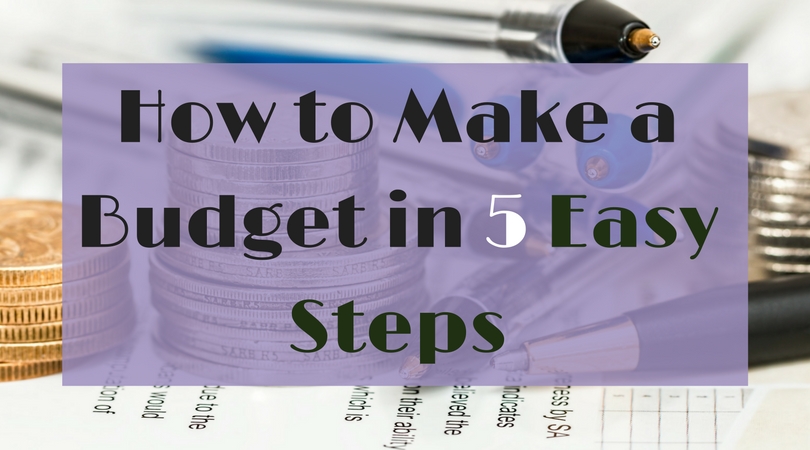
You know you need a budget to keep track of your finances. Especially now that you’re moving (check out our post on how to save money on your move), you need to know what you can afford and where your money is going. If you’re not sure where to start, here’s a guide on how to make a budget in five easy steps.
1. Know How Much You Make
If you earn a yearly salary, it’s easy to figure out how much you’ll bring in every month. Look at your last several paychecks, and use your after-tax income as the starting point for your budget. However, if you are an hourly employee or have a variable income, you’ll need to spend a little more time figuring out how much you bring in every month. MoneyCrashers suggests averaging out how much you earned over the last 6 to 12 months or using your lowest amount during that period to stay on the conservative side.
2. Figure out Your Expenses
One of the most important budget tips is to know how much spend every month. Better Money Habits recommends breaking down your expenses into fixed and variable categories. Some of your fixed expenses include rent, car payments, and health insurance, whereas your variable expenses include gas, groceries, and entertainment. You can go over your expenses from the last several months manually to see how much you spent or use a budgeting app like Mint to help you out.
3. Divide Into Categories
Now that you have all the necessary information, it’s time to divide your expenses into categories and assign them a dollar amount. Subtract each category from your monthly income until you reach zero.
Start with your fixed expenses because you can’t change how much those cost. With the money that’s leftover, determine how much you spend on your variable expenses. It’s better to overestimate how much you spend to give yourself enough wiggle room for necessities in your budget. Divide your budget into categories such as:
- Groceries
- Gas
- Entertainment
- Clothing
- Eating out
- Debt repayment
- Savings
If you end up with a negative number based on your current spending habits, make adjustments to your categories (start with non-necessities like clothing and eating out). If you end up with a positive number, give yourself a little more wiggle room in some of your categories or increase how much you save each month.
4. Make Adjustments
You may need to make adjustments to your budget for the first few months. Your budget should be realistic, so try not to underestimate how much you spend. If you find that you’re going over your budget, find ways you save money or cut down on your costs. This may include eating out one less time per week or making smarter choices at the grocery store. If you’re still having trouble, check out our post on other ways to save money on common expenses.
5. Monitor Your Habits
Your budget isn’t going to do you much good if you don’t follow it. Be sure to monitor your spending habits, so you know how much money you have at all times.This will help you make better choices and achieve your financial goals.
Creating a budget doesn’t need to be difficult or time-consuming. The best finance tip we can give you is to live within your means without feeling like you’re making a ton of sacrifices. Save where you can and make smart choices.

